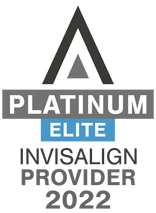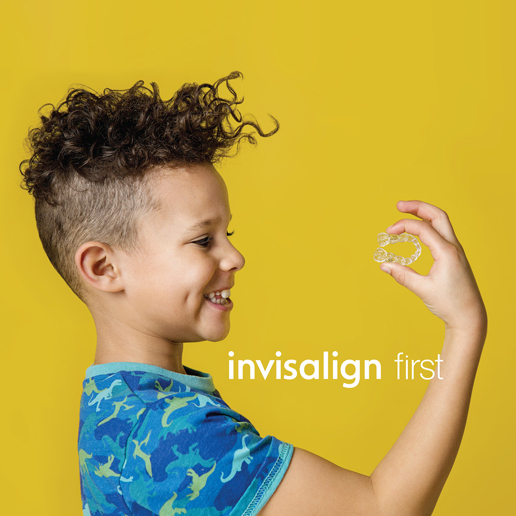The reasons for this examination are:
- The front incisor teeth have usually begun to come through, and problems such as crowding, deep bites, open bites and some jaw discrepancies can be detected.
- The first permanent molars have usually erupted, and your dentist can evaluate for any functional shifts or crossbites.
- For some children, a timely evaluation will lead to significant treatment benefits. For others, the principal immediate benefit is a parent’s peace of mind.
This phase of early treatment is also known as “interceptive” orthodontic treatment or Phase 1 orthodontic treatment. It aims to correct the problems detected at this early stage. Your dentist or orthodontist will be able to discuss the advantages and limitations of early interceptive treatment, and whether comprehensive orthodontic treatment may still be required in the future.
Types of early orthodontic treatment:
- Expansion
- Growth modification (Functional/ myofunctional braces)
- Thumb sucking habit cessation
- Interceptive extractions
Expansion
Traditionally, orthodontic expansion treatments are carried out using fixed or removable expanders, which would require patients or parents to adjust the appliance using a key at home. However, problems can arise when you don’t turn the key correctly or forget to adjust.
Removable or fixed expanders can feel bulky, particularly in the small mouth of a young child. Young patients often complain of discomfort as the expanders can rub against the cheeks or press into the tongue and gums. Additionally, expanders cause some children to speak with a lisp during treatment. Cleaning fixed expanders can also be challenging, as food often gets trapped between the expander and the palate. In some cases, fixed expanders can become dislodged whereas removable expanders can become ill-fitting or loose, reducing their effectiveness.
Some children may not require expanders but could benefit from having fixed braces as part of Phase 1 treatment. However, just like with expanders, children often face issues with this type of appliance:
- The sharp edges of the brace’s brackets and wires can rub against the inside of the mouth, causing discomfort and ulcers.
- Tooth movements tend to be more uncomfortable for patients following each braces adjustment.
- Keeping a fixed brace clean can prove challenging as food debris can become trapped, impacting your child’s diet and increasing the risk of tooth decay.
Invisalign treatment for children
Virtually invisible aligners are not only a teeth straightening option for adults and teens - they can also be used for some children. Invisalign First is the next generation of clear aligners and allows children whose teeth are still growing in to use Invisalign aligners to straighten their teeth. Creating a great smile often involves treating a variety of dental issues early in childhood, many of which occur before all of the adult teeth have erupted.
What is Invisalign First?
Invisalign First is a virtually invisible orthodontic treatment device specially designed for young children, and can be used to correct issues such as tooth crowding and spacing, arch development, tooth protrusions, and the overall appearance of your child’s smile.
Unlike more traditional appliances such as fixed or removable expanders, Invisalign First aligners are able to carry out expansion of the jaws as well as other tooth movements at the same time. These include increasing the amount of space available for the new permanent teeth coming through, or improving the appearance or positions of the front incisor teeth.
Invisalign First offers many benefits for parents
- Perfect for busy parents - it requires 40% fewer orthodontic appointments, compared to traditional braces.
- Allows children to receive Invisalign treatment similar to adults and teens.
- Custom and precise planning for a child’s dental needs.
- Treatment for a variety of orthodontic issues.
- Creating room for incoming teeth.
- Supporting teeth and jawline formation.
- No diet restrictions or activity limitations.
However, Invisalign First may not be the best option for all children. Invisalign First only works when being worn, therefore children who do not wear their aligners as directed may not see the desired results. Dr Eide will be more than happy to explain the different options available that would be best for your child’s treatment.
Growth Modification
Problems with the upper or lower jaws can be addressed in growing children. Such treatments use orthodontic appliances to enhance or maximize the growth of the child’s jaws in order to correct bite problems and improve the patient’s facial appearance.
We can’t “grow” a jaw more than the child is genetically programmed to do, but growth modification can often enhance the growth potential as well as affect the direction of growth of the jaw, leading to correction of the bite problem. These treatments are most effective in young patients before or during their growth spurts.
In patients who present with a smaller lower jaw or an increased distance between the top and bottom teeth, growth modification can be used to enhance the growth potential of the lower jaw. A popular “Class II correctors” is the removable Twin Block appliance. It has separate upper and lower components which interlock when the patient bites together, thereby holding the lower jaw in a more forward position.
Some patients have an “underbite” due to either a small upper jaw or longer lower jaw. These patients may benefit from growth modification to protract the upper jaw forward using a combination of an upper fixed expander and protraction facemask treatment.
Accurate diagnosis and timely intervention are the most helpful ways to treat such cases.
Thumb sucking habit cessation
Thumb or finger sucking habits should ideally be stopped as young as possible when the child only has their baby teeth. When the permanent front teeth start to erupt, these habits can influence the developing permanent teeth as well as the jaw structure of the children. Habit breakers can be fixed or removable and can act as an effective reminder to help children stop their habit.
Interceptive extractions
Some children would benefit from timely extractions of baby or adult teeth to allow for a developing tooth to erupt into the correct position.
For example, a baby tooth may be very firm and resistant to exfoliating naturally, resulting in a permanent tooth erupting out of position. Another common example of how some patients may benefit from interceptive extractions is the removal of baby canine teeth to normalize the eruption path of the developing permanent canine teeth.





